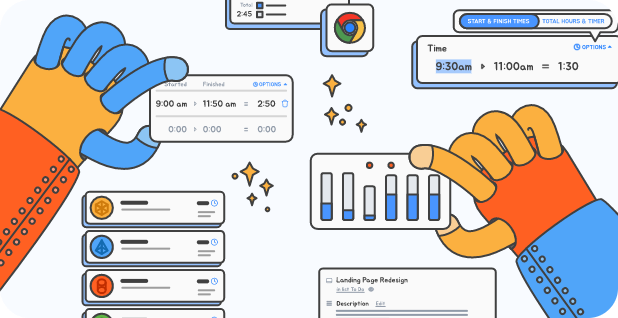Hourly Wage
What is an hourly wage in 2025?
Hourly pay is one of the simplest and most widely used ways to exchange time for money—straightforward on the surface, surprisingly nuanced underneath. In 2025, hourly compensation still anchors much of the global labor market, from hospitality and healthcare to logistics, retail, trades, and a growing share of flexible and gig-style roles. This guide breaks down what the hourly wage is (and isn’t), how it’s calculated, how it evolved historically, where it sits in today’s economy, and what both workers and employers should know to get it right.

What exactly is an hourly wage?
An hourly wage is the rate of pay an employee earns for each hour worked. If your rate is $25 per hour and you work 8 hours, you’ve earned $200 in gross pay for that day (before taxes and deductions). Unlike salaried compensation, hourly pay scales directly with time logged, which makes it:
- Flexible: Pay can rise or fall with hours worked, accommodating variable schedules or seasonal demand.
- Transparent: The formula is clear: hourly rate × hours worked (+ overtime, if applicable).
- Measurable: Hours serve as an auditable input for payroll, labor costing, and job costing.
Hourly work can be full-time, part-time, casual, or on-call, and it may include premiums (overtime, weekend/holiday pay, night differentials), allowances (tool or uniform allowances), and benefits (where applicable). The details depend on local laws, industry awards/standards, and company policy.
Hourly vs. salary: how they differ in practice
Salaried employees earn a fixed amount per pay period, typically for a standard number of hours worked (e.g., 38–40 per week). Hourly employees are paid precisely for time recorded.
Key contrasts:
- Income variability: Hourly income fluctuates with shifts worked; salary is stable across pay periods.
- Overtime rules: Hourly roles are often eligible for overtime pay. Salaried roles may not be, depending on classification and local law.
- Scheduling: Hourly roles often feature shift-based scheduling and may involve penalty rates for nights/weekends/holidays.
- Tracking: Hourly roles rely on accurate time capture (timesheets, time clocks, mobile apps), while salaried roles often track by exception.
- Benefits: Salaried employees are more likely to have superannuation and health insurance included in their contracts.
If you’re comparing offers, convert the salary to an effective hourly rate (salary ÷ expected annual hours) and compare apples-to-apples with hourly rates, factoring in overtime eligibility, benefits, commute time, and schedule stability.
How hourly wages are set: market, law, and the cost of living
In most places, hourly wages are shaped by three forces:
- Labor market supply and demandEmployers set rates to attract and retain talent. Tight labor markets push rates up; slack markets can depress wages.
- Legal floors and rulesFederal minimum wage laws establish the lowest legal hourly rate. Overtime, holiday pay, rest breaks, penalty rates, and record-keeping requirements further shape take-home pay and scheduling.
- Living costs and productivityEmployers consider inflation, local housing/transport costs, and productivity. Some organizations peg internal pay bands to living wage benchmarks, which estimate the hourly income needed to meet basic living standards in a region.
Important note for 2025: Specific minimum wage figures vary by country, state, province, or award and are updated periodically. Always check your local authority or official labor department for the current numbers before making decisions.
Components of hourly pay in 2025
Even when the base rate is simple, the final paycheck often reflects multiple elements:
- Base hourly rate: The headline amount per hour (e.g., $22.00/hr).
- Overtime: Typically paid at a higher multiplier (e.g., 1.5× or 2×) after a threshold of daily or weekly hours, or on specific days.
- Penalty rates / shift differentials: Premiums for nights, weekends, public holidays, or hazardous work.
- On-call / call-back pay: Additional compensation for availability or returning to work outside scheduled hours.
- Allowances: Tool, uniform, travel, or meal allowances as stipulated by law or policy.
- Commissions and tips: In some roles, variable earnings supplement the base rate (subject to local regulations).
- Bonuses: Performance or seasonal bonuses, sometimes prorated for hourly staff.
- Deductions: Taxes, retirement contributions, union dues, court-ordered deductions, or benefit premiums.
- Non-paid time: Certain breaks or travel may be unpaid; others must be paid depending on local rules (e.g., travel between job sites during the day often counts as paid time).
The history of the hourly wage: From factory bells to flexible time
The hourly wage emerged alongside industrialization in the 19th century, when factories needed a standardized way to value labor time across large, shift-based workforces. Key historical waypoints:
- Early industrial era: Pay was often piece-rate (per item produced) or daily. As factories scaled, time-based pay gained traction because it was easier to administer and audit, and it aligned with the new regimented, clock-driven workday.
- The eight-hour day movement: Labor struggles in the late 19th and early 20th centuries popularized the rallying cry “Eight hours for work, eight hours for rest, eight hours for what we will.” This movement pushed not just for shorter hours, but for overtime premiums to deter exploitative schedules.
- Early–mid 20th century: Governments introduced minimum wage standards and codified overtime rules. Unionization helped standardize pay scales, seniority systems, and penalty rates across industries.
- Late 20th century: Services expanded and manufacturing automated. Hourly pay spread far beyond factory floors into healthcare, hospitality, retail, and professional services (e.g., labs, creative studios, and certain tech ops roles).
- 21st century: Digital timekeeping replaced punch cards. Mobile apps, biometric clocks, geofenced job sites (in some industries), and cloud payroll became common. Simultaneously, ethical debates intensified around privacy, fair scheduling, and gig work, renewing attention to what “a fair hour’s pay” should include—predictability, rest, and transparency, not just the rate itself.
- 2020s: Remote, hybrid, and flexible scheduling models expanded. Many employees seek predictable hours, work-life balance, and meaningful wage progression, while employers juggle compliance, labor shortages in key sectors, and inflationary pressures. The hour remains the standard unit of labor time, but the context—where, when, and how those hours happen—has diversified.
Hourly wages across sectors: Who's paid hourly in 2025?
While any role could be set up as hourly, certain sectors are dominated by it:
- Healthcare and aged care: Nurses, aides, allied health assistants, and support staff often receive penalty rates for nights/weekends.
- Hospitality and tourism: Servers, baristas, chefs, and event staff typically combine base pay with tips or loadings.
- Retail and distribution: Store associates, warehousing, and logistics roles frequently run on shift differentials and will also pay overtime.
- Construction and trades: Electricians, plumbers, carpenters, and laborers often blend hourly pay with allowances for travel between job sites.
- Manufacturing: Production workers, QA, and maintenance techs commonly use hourly models.
- Gig and flexible work: Delivery drivers, on-demand support, content moderation, and certain creative/technical gigs may blend hourly, task-based, or hybrid arrangements.
Compliance essentials: Overtime, breaks, and record-keeping
Regardless of location, three pillars recur in hourly pay compliance:
- Accurate recordsEmployers must track hours worked, rest breaks, overtime approvals, and leave. Digital time tracking like Hourly reduces errors and provides auditable logs.
- Overtime and penalty ratesTriggers vary: daily thresholds (e.g., after 8 hours), weekly thresholds (e.g., after 40 hours), or specific days (Sundays/public holidays). Multipliers must be applied correctly and consistently.
- Breaks and rest periodsMost jurisdictions require meal and/or rest breaks after certain hours on shift. Non-compliance risks penalties and back pay.
Pro tip for both sides: keep written policies on scheduling, break entitlements, and approval workflows for overtime. A clear, shared understanding prevents disputes.
Pay transparency, predictability, and fairness
In 2025, three topics dominate hourly pay debates:
- Pay transparency: More employers share pay ranges in job ads and internal bands. For hourly workers, that means cleaner comparisons and fewer surprises.
- Predictable scheduling: “Clopening” (close late, open early) and last-minute changes have drawn scrutiny. Predictability—advance notice, minimum shift lengths, fair rest between shifts—reduces burnout and turnover.
- Equity and inclusion: Ensuring consistent pay for comparable roles across gender, race, age, and other protected classes requires vigilant auditing, bias-aware performance criteria, and standardized progression paths.
Budgeting and life planning with hourly pay
For workers, hourly income can be irregular. A few practical tactics help smooth the bumps:
- Build a base budget using your average historical weekly hours, not your best weeks.
- Create a “variable income buffer.” Funnel surplus from high-hour weeks into a reserve to cover lean weeks.
- Track effective hourly rate. Include commute time, unpaid prep, and gear costs to see your real earnings per hour of total effort.
- Use sinking funds for predictable but non-monthly expenses (car rego, equipment, holidays).
- Automate savings the day you’re paid—small, consistent transfers beat occasional lump sums.
Negotiating an hourly wage (and raises)
For workers:
- Research local ranges for your role, factoring in certificates/licenses, shifts, and responsibilities.
- Quantify your value: Outline specific outcomes—reduced waste, faster turnaround, exemplary customer scores, safety leadership.
- Leverage credentials: Additional tickets/certs (e.g., first aid, forklift, infection control) often justify higher rates or differentials.
- Propose structure: If a big jump isn’t feasible immediately, ask for a staged plan (e.g., +$1 now, +$1 after a certification or 90-day review).
For employers:
- Anchor to market data and a clear pay framework to avoid ad-hoc decisions.
- Tie progression to skills (competency frameworks, cross-training) so increases feel earned and repeatable.
- Audit equity across similar roles, shifts, and sites.
- Communicate total rewards: Spell out overtime rules, differentials, allowances, benefits, and training pathways.
Technology’s role: Making the hour count (without micromanaging)
Modern timekeeping aims to capture hours accurately while preserving trust:
- Simple capture: Mobile/desktop timers (like Hourly!), job-code selection, and project tags help employees log what they did, where, and for whom without friction.
- Compliance guardrails: Systems can flag missed breaks, duplicate punches, or overtime pay thresholds so issues are caught early.
- Payroll integrations: Clean time data reduces errors, rework, and pay disputes.
- Privacy-respecting approaches: Many teams now prefer tools that do not rely on invasive surveillance (e.g., constant screen capture or GPS tracking for office roles), focusing instead on transparent, employee-controlled inputs that still meet legal record-keeping standards.
The right tooling helps both sides—employees see accurate, timely pay; employers see reliable labor costs and fewer headaches.
Global snapshots: Why “hourly pay” isn’t identical everywhere
While the core concept is universal, details vary widely:
- Minimum wage updates occur on different cycles (annual, semi-annual, ad-hoc).
- Award or collective agreements may add industry-specific rules (e.g., penalty rates in hospitality or healthcare).
- Tipping cultures influence base rates vs. expected gratuities.
- Payroll cadence (weekly, fortnightly, monthly) impacts cash flow.
- Benefits (paid leave, holiday pay, superannuation/retirement) can be embedded differently across different countries.
In 2025, globalization means many companies operate across borders. If you’re expanding, don’t “copy-paste” a pay policy—localize it to each jurisdiction’s rules, terminology, and cultural expectations.
Common pitfalls and how to avoid them
For workers:
- Not checking pay stubs: Make sure overtime multipliers, penalty rates, and allowances were applied correctly.
- Under-recording short tasks: A 20-minute clean-up, tool return, or job-site hop may be payable—track it.
- Ignoring commute vs. travel rules: Commute time may be unpaid; travel between job sites during the workday is often payable—know the difference.
- Missing breaks: If breaks must be recorded, capture them correctly to avoid disputes.
For employers:
- Rounding rules misapplied: Rounding must be neutral and compliant; excessive rounding in one direction risks back pay claims.
- “Off-the-clock” work: Prohibit unsanctioned pre-shift or post-shift work and provide a way to fix missed punches.
- Inconsistent overtime approvals: Clarify who can authorize overtime and how it’s documented.
- Poor communication: Post policies, train managers, and revisit them during onboarding and audits.
The future of hourly pay: Flexibility with fairness
Three trends likely to shape hourly wages in the next few years:
- Skills-based pay bands: Rates increasingly tied to demonstrated skills and micro-credentials, not just tenure.
- Predictability by design: Scheduling software and new policies that prioritize human-friendly shifts (fewer clopening shifts, more notice).
- Transparent progression: Clear ladders (e.g., Level 1 -> Level 2 with specific competencies) to help workers see how to grow their rate and responsibilities.
The hour isn’t going anywhere—but the experience around it is evolving toward more respect, stability, and mutual trust.
Frequently asked questions
1) How do I convert a salary to an hourly rate?
Divide the annual salary by expected annual hours. For a 40-hour week over 52 weeks, that’s 2,080 hours. Adjust for your reality (public holidays, unpaid leave).
2) Are paid breaks included in “hours worked”?
If breaks are paid under your policy or award, they count toward hours worked. Unpaid breaks don’t—track them separately.
3) Do tips count toward minimum wage?
It depends on local law. Some jurisdictions allow a “tip credit”; others require the employer to ensure the base rate meets minimum wage regardless of tips.
4) Is travel time paid?
Commuting to and from your regular workplace is usually unpaid. Travel between job sites during the day, or required travel for work, is often paid (or reimbursed). Check your local rules and employer policy.
5) What happens if I forget to clock in or out?
Report it immediately. Good systems allow managers to correct missed punches with an audit trail. Do not work off the clock to “fix” the numbers.
6) How can I raise my hourly rate?
Gain in-demand skills, volunteer for hard-to-staff shifts (if sustainable), document outcomes you influence (quality, safety, speed), and prepare a data-driven case at review time.
7) Is health insurance included for hourly paid employees?
For casual employees in the US and many other developed nations, health insurance is not included in an employee's hourly wage compared to salaried workers with a fixed salary.
A quick checklist (workers and employers)
Workers
- Keep your own log of shifts and breaks.
- Review each pay stub; query discrepancies promptly.
- Track certifications and use them as leverage during pay reviews.
- Build a buffer to manage variable hours.
Employers
- Standardize pay bands and publish them internally.
- Implement accurate, user-friendly time capture (mobile and desktop).
- Automate overtime and penalty calculations; audit regularly.
- Train managers on scheduling fairness and compliance.
An hourly wage is deceptively simple: a dollar amount multiplied by time. In practice, it sits at the crossroads of human needs (rest, predictability, dignity), business realities (costs, demand, productivity), and legal frameworks (minimums, overtime, breaks). In 2025, getting hourly pay right means more than quoting a rate—it requires clear policies, accurate timekeeping, fair scheduling, and open communication.
Done well, hourly pay can be as flexible and fair as salary pay: workers are paid correctly for every hour they contribute, and employers gain the visibility and trust they need to run great teams.















